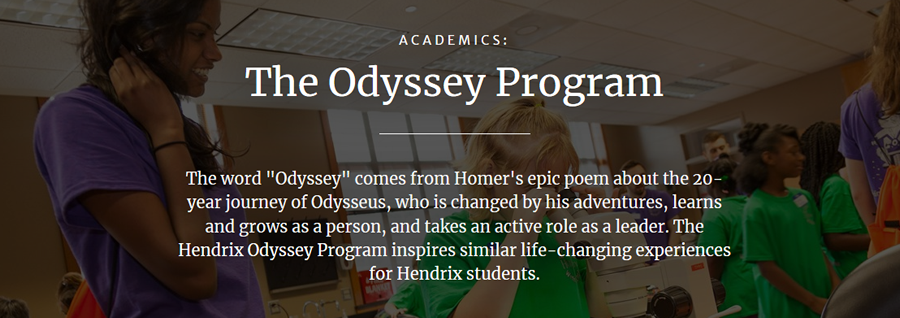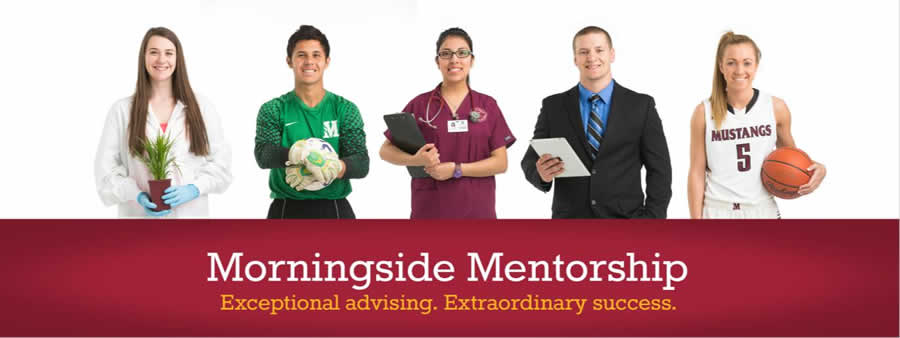Do Signature Programs Really Work?
by Bob Campagnuolo and Jonathan Steele, principals, GDA Integrated Services

In recent years there has been a lot of talk about signature programs as the savior of small, private colleges and universities. An article in The Chronicle of Higher Education, for example, highlights the rush of colleges trying to develop their own signature programs to gain an edge in attracting students.
The big question is: Do signature programs really work?
Yes, but they have to be authentic to your institution and the community. Staff, faculty, students, parents, and alumni have to fully understand and buy into a signature program. They are the face of your institution and will be the greatest advocates in communicating the distinctive qualities of your educational experience and the benefits of your signature program.
GDA Integrated Services has been working with colleges, universities, and independent schools for over 30 years to identify and communicate their distinctive qualities. We also have a long history of partnering with these institutions to develop successful signature programs. Since working with Hendrix College to develop and launch their groundbreaking Odyssey program, we have helped dozens of colleges and universities to develop signature programs unique to each institution.
The Hendrix Odyssey Program
In 2005, to help Hendrix College reverse declining enrollment and answer intense competition from the flagship public university, GDA worked hand-in-hand with a faculty marketing committee to help develop and launch The Hendrix Odyssey—which provides funding and a secondary, non-academic transcript to complement the traditional academic transcript that recognizes six areas of hands-on learning: artistic creativity, global awareness, professional and leadership development, service to the world, research, and special projects. The program incorporated many existing hallmarks of Hendrix, and we repackaged and promoted what they had always done in a way that was more attractive to prospective students. In focus groups, students consistently said they came to Hendrix because of the Odyssey program. Long-term results include record enrollment (with a significant increase in out-of-state students) and fundraising, 60% net tuition growth, and an increase in retention from 81% to 87%.
Dakota Wesleyan UniversityŚLearnStrong Skills Assessment and Center for Talent Development
Lacking a clear identity and struggling with shrinking enrollment, Dakota Wesleyan invited GDA to conduct extensive research that revealed a positive association between DWU and healthcare education, as well as a strong interest among prospective students for careers in healthcare professions. We recommended a wholesale reorganization of the university, including the establishment of three new colleges within the university, one of which is the intentionally named College of Healthcare, Fitness, and Sciences, as the flagship college. To communicate the benefits of a DWU education, we developed positioning around LearnStrong (since updated to “Discover Your Strength”) and the institution’s extensive use of skills assessment. We also recommended the creation of a new Center for Talent Development to help each student match innate talents and strengths with likely best fit programs of study. With a clear identity and programs that are in line with the region’s educational needs, the University has experienced an increase in enrollment of almost 20%, raised over $10 million in a capital campaign, and built a 48,000 square foot, state-of-the-art Health Sciences Center.
Professional Excellence and Results Matter at York College of Pennsylvania
In 2009, York College was confident that it offered a quality education at a price point that was competitive with public institutions but wanted to learn more about how alumni, employers, and the larger community perceived the College. GDA’s research revealed the school’s relevance in the real world—that York prepares its students for careers and for becoming more successful professionals. Based on our research and recommendations, the College established the Center for Professional Excellence (now the Leadership Development Center) and an annual poll on professionalism and career success, which have both gained national attention and have been featured prominently in the media, including NPR, The Wall Street Journal, and MSNBC. To pull it all together, GDA positioned York College’s offerings under the “Results Matter” platform, which has evolved into “From Day One” to further emphasize real-world experience, close connections and personal growth.
The Morningside Mentorship Program
Looking to highlight the value of a Morningside education, attract more students, and improve retention, the College developed a comprehensive advising program based on GDA’s research findings and recommendations. This program offers something that the state schools can’t match—professional advisors and personal advocates who help students, beginning in their freshman year, get the most out of their Morningside experience. To reinforce just how central advising is to a Morningside education, the College raised $13 million to create a dedicated, state-of-the-art advising and learning center. To help launch the program, fully engage current students, and raise awareness among prospective students, we named the program Morningside Mentorship and developed an integrated marketing and promotional campaign. The program has been in effect for several years and has delivered positive results across the board.

Roadmap for Success
In our experience developing and implementing signature programs, the following are vital for success:
- Authenticity. A signature program has to be authentic to your institution and its mission. Copycat programs don’t work.
- Buy-in and understanding. Staff, faculty, students, parents, and alumni will be your biggest advocates, but they all must speak from the same page.
- Visibility and promotion. If no one knows about your new program, all your planning and hard work will be wasted.
- Continuous improvement and evolution. This is not a one-shot deal. The program must evolve over time, changing and improving to stay relevant.
- Hard work and commitment. An institution’s leadership needs to be behind the initiative 100% and make a long-term commitment, or people will lose interest.
- Be bold! Your goal is to become truly distinctive. Offer something that no one else does and would be hard pressed to duplicate.
- Measure success. Success stories and hard evidence must be captured to show the real benefits of your signature program and prove the value of your education.
We Can Help
GDA Integrates Services can help you develop an authentic and distinctive signature program. We can also help you fine-tune your value proposition and ensure that you get the right messages at the right time to prospective students and parents.
Contact GDAIS today:
Bob Campagnuolo
860-388-3958
bob@dehne.com
